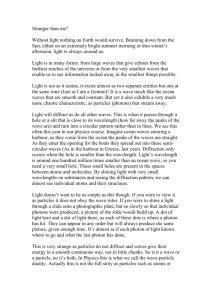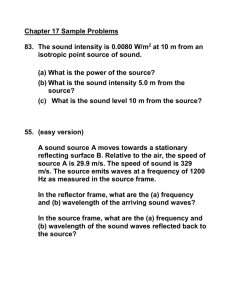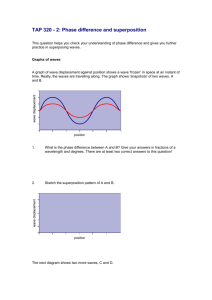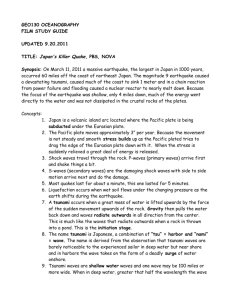Waves and Tsunami - University of Hawaii at Hilo
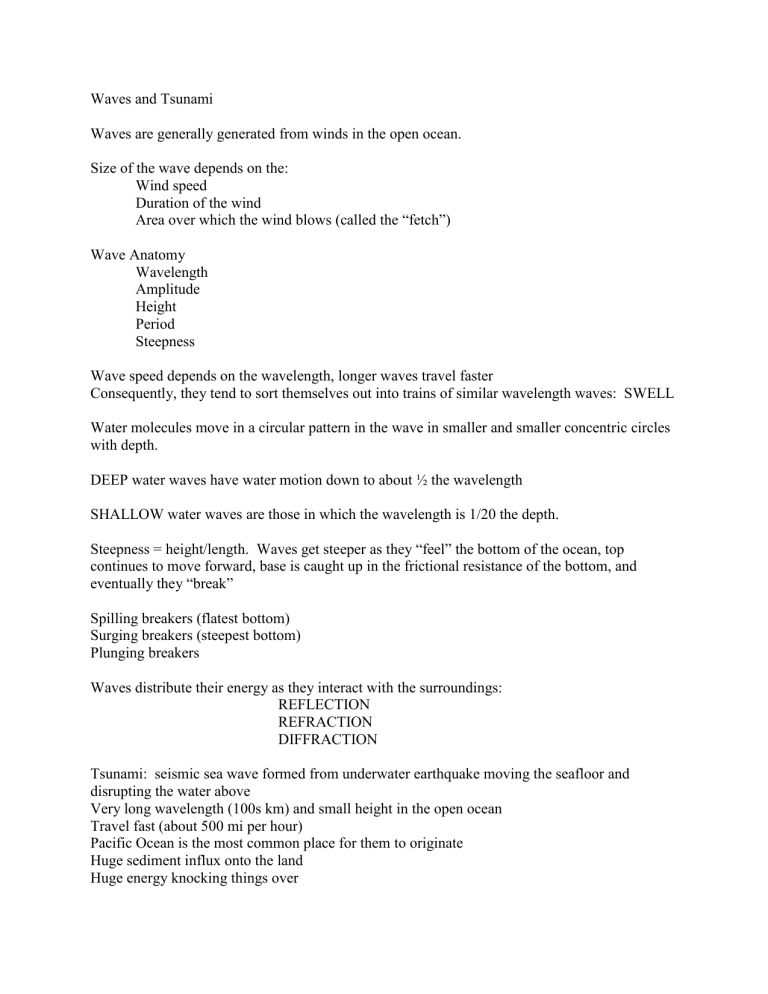
Waves and Tsunami
Waves are generally generated from winds in the open ocean.
Size of the wave depends on the:
Wind speed
Duration of the wind
Area over which the wind blows (called the “fetch”)
Wave Anatomy
Wavelength
Amplitude
Height
Period
Steepness
Wave speed depends on the wavelength, longer waves travel faster
Consequently, they tend to sort themselves out into trains of similar wavelength waves: SWELL
Water molecules move in a circular pattern in the wave in smaller and smaller concentric circles with depth.
DEEP water waves have water motion down to about ½ the wavelength
SHALLOW water waves are those in which the wavelength is 1/20 the depth.
Steepness = height/length. Waves get steeper as they “feel” the bottom of the ocean, top continues to move forward, base is caught up in the frictional resistance of the bottom, and eventually they “break”
Spilling breakers (flatest bottom)
Surging breakers (steepest bottom)
Plunging breakers
Waves distribute their energy as they interact with the surroundings:
REFLECTION
REFRACTION
DIFFRACTION
Tsunami: seismic sea wave formed from underwater earthquake moving the seafloor and disrupting the water above
Very long wavelength (100s km) and small height in the open ocean
Travel fast (about 500 mi per hour)
Pacific Ocean is the most common place for them to originate
Huge sediment influx onto the land
Huge energy knocking things over
Hawaii: Local and “foreign” tsunami
1946, 1960 foreign, 1975 Kalapana local EQ.





